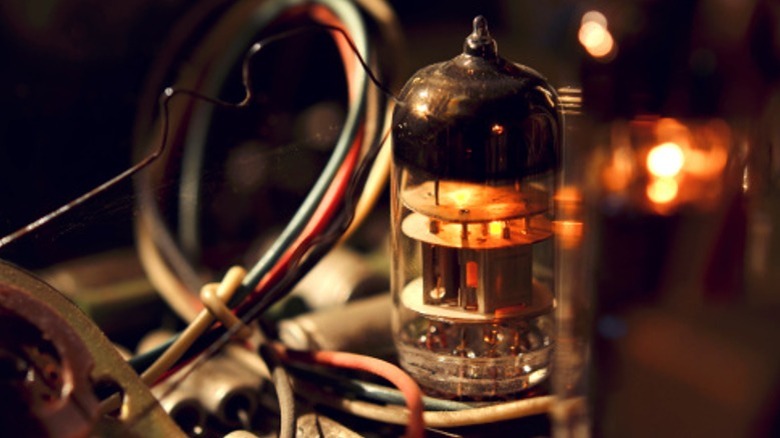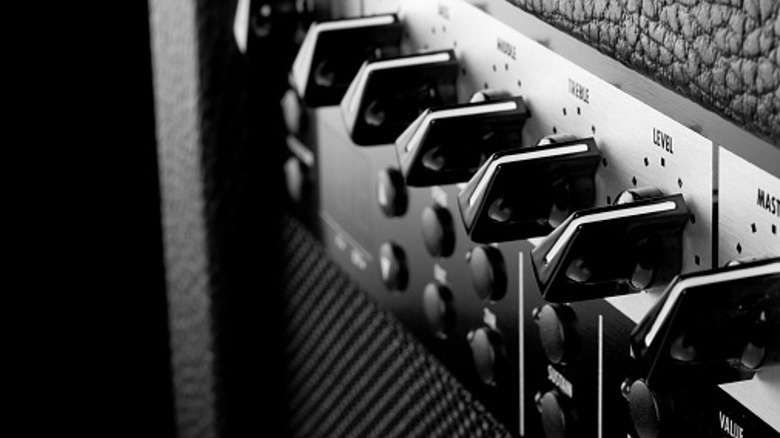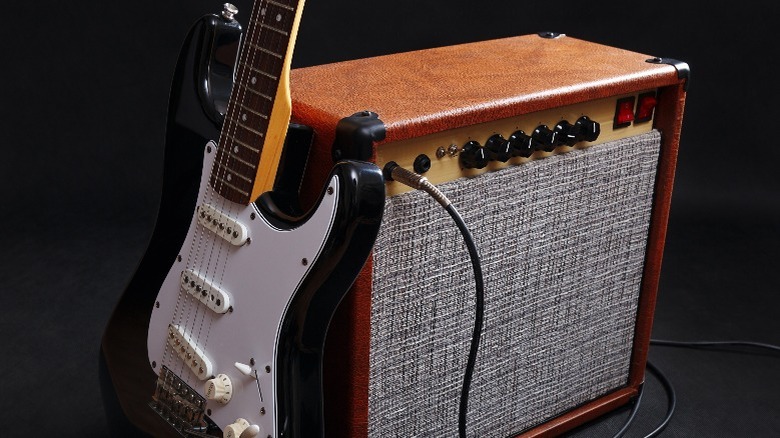Tube Vs Solid State: Everything You Need To Know About Guitar Amps
All electric guitar players know that the amplifier is just as important — if not more — as the guitar itself for shaping your sound. Each major amplifier model has unique dynamics and tonal characteristics that may or may not suit your needs and preferences as a musician. Subjectivity and personal taste play crucial roles in the world of music and apply to guitar amps as well. Therefore, it's illogical to deem one model as objectively the best amplifier for all guitarists.
Besides budget, the suitable amplifier heavily depends on your playing style, guitar pickups, the tone you're after, and intended use. Obviously, the guitar amp a busker uses for improvising on the pentatonic blues scale vastly differs from that of a studio session player or even a live performer playing indoors.
Preamps are arguably the most important part of amplifiers for shaping the tone of your guitar. Generally, most amplifiers use either vacuum tubes (tube amps) or transistors (solid state amps) to translate the current from your electric guitar to audible signals played through speaker cabinets. Many traditionalists and purists swear by tube amps. However, solid-state amplifiers offer many qualities and features that many modern guitar players prefer over the hassles that come with tube amps.
In this post, we'll go through everything you need to know about tube and solid-state guitar amps. The information provided in this article is based on years of experience in playing, building, and teaching the electric guitar and working with countless amplifiers both in studio environments and live venues. For a more accurate and thorough guide, everything is fact-checked with the data available from amp makers' official websites, including Laney, Fender, and Marshall.
What's a tube amp?
Also known as valve amplifiers, tube amps date back to the early 20th century. Before the invention of transistors in the 1940s, most electronic amplifiers used thermionic valves to increase the amplitude or power of a signal. In simple terms, the vacuum tubes let the current flow through between a cathode and an anode, amplifying the sound signal.
Although not as accurate as transistors, tubes naturally add a distinctive warmth to the original audio signal. The added warmth is only one of the reasons many audiophiles and guitar players prefer tube amps over solid-state models.
Moreover, tube amps start to behave differently as you crank up the gain or volume. Each tube amp has a unique "breakup tone" that pushes the tubes into overdrive. This results in augmented harmonic distortions at louder volumes, which directly affects the dynamics of your guitar tone. Most vintage amps, like the Fender Deluxe Reverb, Princeton, and Blues Junior, get their unique sounds from using multiple tubes as preamps.
What's a solid-state amp?
On the other hand, solid-state guitar amps offer a relatively more modern formula for amplifying sound signals. Instead of vacuum tubes and valves, solid-state amplifiers make use of transistors as preamps.
Thanks to these transistors, solid-state amps capture a noticeably more accurate sound with fewer added effects. The sound you get from amplifying a guitar signal is raw and clean compared to the natural warmth that comes along tube amps. Additionally, transistors don't break up when you increase volume, meaning you can virtually play as loud as you want without dealing with any natural harmonic distortions.
The transparency in sound has made solid-state amps vastly popular among jazz players and anyone who wants a very raw and unprocessed output from a guitar amplifier. Besides all that, transistors are more energy-efficient and can deliver their peak performance instantly. Tube amps, however, require a "warm-up" time before they can put out their full potential.
How do tube and solid-state amps differ in dynamics and tonal characteristics?
As mentioned, the most significant perk of tube amps is their enveloping warmth that adds a unique richness to the sound of your guitar. It also makes the signals sound broader as if they're coming through a concert hall. Another distinctive characteristic of tube amps is their natural distortion. Cranking up the gain and putting those valves to work can give a new life to your guitar sound, suitable for overdriven rock riffs.
Setting the volume on a tube amp's sweet spot between clean and overdriven allows guitarists to control the level of distortion manually through their playing style. Playing softer leads to quieter and cleaner sounds, whereas playing more firmly puts more emphasis on the notes by being louder and adding new harmonics to the sound. Many blues players use this feature of tube amps to create interesting dynamics during solo sections.
In contrast, the transistors in solid-state amps have more precision and are more responsive. The clean results from a solid-state guitar amp allow for audio procession more freely. Whether you want to use analog pedals or digital gear to add sound effects, solid-state amps allow you to build your sound without any pre-procession coming from the amp itself. Some guitarists appreciate this freedom, whereas some believe such audio manipulations can never replace the natural effects and dynamics coming from a tube amp.
Moreover, the accuracy of transistors allows for more direct and linear audio imaging. If a tube amp's richness creates a broad concert hall effect, the precision from solid-state amplifiers makes the output sound like it's coming from an acoustically treated studio room. Besides clean and jazzy sounds, this feature also servers aggressively distorted guitar sounds in modern metal genres.
Which type of guitar amp is more functional?
When it comes to functionality, tube and solid-state amps have different advantages and drawbacks. First and foremost, the tonal differences you get from adjusting the volume on tube amps work like a double-edged sword. Yes, you can get very interesting dynamics from playing in different volumes. However, you have to compromise those natural distortions if you want to play late at night without annoying your neighbors. On the other hand, if you find yourself playing in front of a large crowd, playing through louder volume levels than what you typically use in rehearsals results in different sound characteristics.
Another disadvantage of tube amps over solid-state amps is the time it takes to set them up. You can turn on a solid-state amp, and it'll be ready to go. Tube amps, however, need a few minutes before they can offer their optimal sound quality and tonal character. This is because vacuum tubes operate well after they reach a certain temperature.
Portability is another issue with tube amps. If you're looking for gear you can take anywhere with you for rehearsals and live performances, solid-state amps come in significantly smaller and lighter packages, making them more suitable for musicians on the road.
Lastly, tube amps are generally more expensive compared to solid-state digital amps. Besides the higher price tags, maintaining a tube amp is also more costly. After a few years of regular use, vacuum tubes start to sound dull and crackle, which is why you have to replace tubes once every couple of years.
Tubes vs transistors: which amp is the best for you?
Choosing a guitar amp heavily depends on your specific sonic goals and preferences. If you're a blues or a traditional rock player looking for an amp that gives you a vintage and dynamic sound, a decent tube amp can be an excellent choice. However, you should ensure you can play on louder volumes without any disturbance to take full advantage of a tube amp.
On the other hand, there are various reasons why you might want to opt for a solid-state amp instead. The price tag is a primary factor. It's not difficult to find good-sounding and high-wattage solid-state amps for under $500. On the other hand, tube amps will cost around the $1,000 ballpark. Also, if you want to move your guitar rig around, a solid-state guitar amp can be much more of a portable option than a big and hefty tube amp.
If you want to get one amp to play various genres with, a solid-state amp can be a better choice. You can seamlessly switch between heavy metal and a mellow pop song without dealing with tube screams or waiting for the valves to warm up.
Methodology
The information provided in this post regarding tube and solid-state amps comes from years of first-hand experience as a musician and guitar luthier. Moreover, specific details and information have been double-checked with guitar amp technicians and official Fender and Laney websites.






